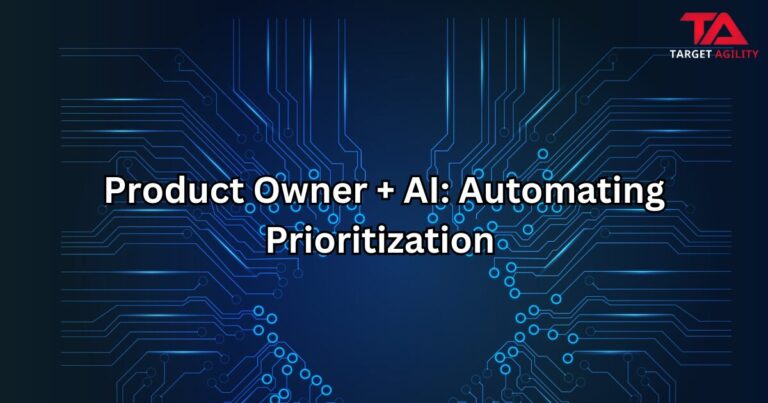Agile is a popular way of managing projects that helps businesses become more flexible, improve teamwork, and work more efficiently. Originally designed for software development, Agile has now spread to many industries, like marketing, finance, and operations. If you’re interested in using Agile for your business, this guide will show you how to get started step-by-step.
What is Agile?
Before we dive into applying Agile, it’s important to know what it is. Agile is a project management method where teams work in short cycles (called sprints) to deliver small parts of a project, instead of trying to complete everything at once. It focuses on teamwork, flexibility, and gathering customer feedback at different stages.
Agile follows four key principles:
- People and communication are more important than strict rules
- Working results matter more than lengthy documents
- Working with customers is better than following a fixed contract
- Adapting to change is better than sticking to a fixed plan
Step 1: Build a Strong Team
Agile depends on teamwork, so the first step is to put together a group of people with different skills and experiences. This helps get multiple perspectives and allows for quicker decision-making.
For example, if you’re working on a marketing project, your team might include people from design, content, and data analysis. Everyone will work together on small tasks and share responsibilities.
There are key roles in an Agile team:
- Product Owner: The person who represents the customer and decides what tasks the team should work on.
- Scrum Master (if you’re using Scrum): A person who helps the team stay focused and follows Agile principles.
- Team Members: The people who actually complete the tasks, like developers, marketers, or designers.
Step 2: Start with a Small Project
Introducing Agile can be challenging, so start small. Choose a simple project that has some risk but won’t affect the business too much. This can be something like launching a new product, running a marketing campaign, or improving an internal process.
Break the project into smaller tasks that can be completed in short cycles, usually two to four weeks. Each cycle, or sprint, should produce a usable result, like a new product feature or a piece of marketing content. After each sprint, get feedback, evaluate what worked and what didn’t, and use that to improve the next sprint.
Step 3: Use Agile Tools
Agile often relies on tools to help organize and track tasks, communicate, and manage the workflow. Some popular Agile-friendly tools include:
- Jira: Used to track tasks and organize sprints.
- Trello: A simple tool with boards and cards for task tracking.
- Asana: A task management tool with Agile features.
- Slack: A communication tool for team collaboration.
These tools can make it easier to manage tasks and keep everyone on the same page.
Step 4: Use Key Agile Practices
Once you have a team and the tools, it’s time to start using Agile practices, such as:
- Daily Stand-up Meetings: Short, daily meetings (about 15 minutes) where team members talk about what they worked on the day before, what they’ll do today, and any problems they’re facing. These meetings help keep everyone in sync.
- Sprint Planning: Before starting each sprint, the team meets to decide what tasks to focus on. The Product Owner helps prioritize these tasks, and the team estimates what they can complete in the sprint.
- Retrospectives: After each sprint, the team looks back at how the work went. They discuss what went well and what can be improved for the next sprint. This helps create a culture of learning and improving.
- Continuous Customer Feedback: Throughout the project, the team gets feedback from customers or stakeholders to make sure the project is meeting their needs.
Step 5: Expand Agile to the Rest of the Business
Once you’ve successfully used Agile in a small project, you can start expanding it to other teams or areas of the business, like marketing, operations, or customer service. Each department may need to adjust the process to fit their specific needs, but Agile principles can be applied everywhere.
To help with scaling Agile across the business, consider using frameworks like:
- Scrum: For teams that like to work in sprints.
- Kanban: For teams that prefer a continuous workflow, where tasks are tracked visually.
- Scaled Agile Framework (SAFe): For larger organizations that want to use Agile across multiple teams.
Step 6: Create an Agile-Friendly Culture
For Agile to truly succeed, it needs to be part of the company culture. This means encouraging a mindset of flexibility, teamwork, and continuous improvement. Leadership plays a big role in promoting this culture by allowing teams to experiment, learn from mistakes, and make decisions based on data.
Open communication and breaking down barriers between teams are essential for building an Agile-friendly culture. Over time, this culture will help your business respond faster to changes, come up with new ideas, and improve overall efficiency.
Conclusion
Applying Agile in your business is a powerful way to improve flexibility, collaboration, and results. By building the right team, starting with a small project, using the right tools, and following Agile practices, your business can adopt Agile and succeed in today’s fast-paced world. Agile helps companies stay innovative and competitive by focusing on continuous improvement and customer feedback, ensuring they’re always delivering the best possible results.











